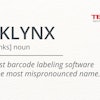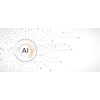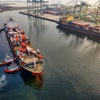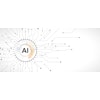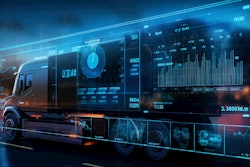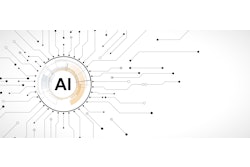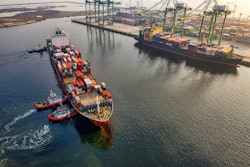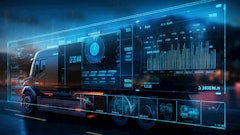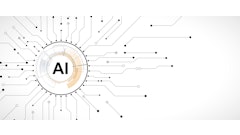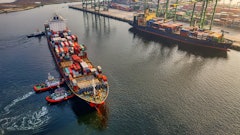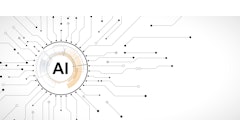
Recent global shockwaves have exposed a fundamental weakness in our food ecosystem: supply chains designed for stability are breaking under constant disruption. This is a structural reckoning for an industry where freshness, availability, and safety are paramount. Once treated as a backend cost center, the food supply chain has become the defining battleground for efficiency, customer loyalty, and operational resilience.
Companies that adapt quickly, reimagine their networks, deploy automation with purpose, and harness predictive intelligence, can survive and lead. Artificial intelligence (AI) is the engine of this transformation. It offers a strategic framework to move from a reactive posture to a proactive one, turning data into a decisive advantage. Those who master its application will build the future’s resilient, customer-centric supply chains.
Confronting core vulnerabilities
For meaningful change to occur, leaders must recognize that outdated models cannot address the weaknesses in today’s food supply chain. Global immigration policies and an aging workforce has led to an increase in labor shortages, particularly in warehouses and the cold chain, causing disruptions that result in costly order shorts and stock loss. Reliance on fragile networks and single-source suppliers further exacerbates these issues, creating vulnerabilities that threaten product quality and lead to waste and food safety concerns.
AI is not a single solution, but a powerful tool that can directly address these vulnerabilities depending on the application and how it’s being used. Its strategic deployment turns operational weaknesses into competitive strengths.
Master demand with predictive intelligence
To combat volatility, supply chains need to move beyond historical forecasting methods. AI-powered demand forecasting ingests and analyzes massive, complex datasets, from weather patterns and social media trends to real-time sales data, predicting what customers will want with far greater accuracy. Companies can leverage AI to transform their supply chain planning, unlocking significant gains in operational efficiency. This level of foresight allows companies to optimize inventory, minimize waste, and secure the availability of high-demand products, directly enhancing the customer experience.
Deploying automation with purpose
Automation powered by AI is an enabler of scale, safety, and service consistency, but it must be matched to a clear business case. In large distribution hubs, AI-powered robotics can manage complex sortation and delicate unit-picking tasks that were once solely the domain of human workers, filling critical labor gaps and improving order accuracy. The key is a strategic approach, identifying the precise pain point where intelligent automation will deliver the most significant impact on efficiency and effectiveness.
De-risk networks with dynamic simulation
Why wait for a crisis to find your network’s breaking point? Simulation tools, like digital twins, allow organizations to model their entire supply chain in a virtual environment. With this capability, leaders can stress-test their networks against potential disruptions, validate the business case for a new facility, or identify network bottlenecks before they impact customers. In daily execution, AI-driven logistics platforms optimize routes in real time, navigating around traffic, adjusting for fuel costs, and ensuring the most efficient flow of goods from farm to shelf. This turns network design into a proactive strategy, reducing risk, and providing the clarity needed for decisive action.
Secure the cold chain with proactive analytics
The integrity of the cold chain is non-negotiable, and AI enables companies to transition from reactive damage control to proactive quality assurance in their equipment. By analyzing sensor data from refrigeration units, AI can predict equipment failure before it happens, triggering preventative maintenance and averting catastrophic spoilage. It can also optimize delivery routes to minimize time out of refrigeration, a critical factor when every hour a cold chain product spends out of refrigeration drastically reduces its shelf life. This supports enhanced product quality, reduces shrinkage, and protects brand reputation.
Enhanced resilience and security
AI hardens the food supply chain on three fronts: foresight, traceability, and protection. Risk-sensing models are being developed to scan supplier health, weather, and geopolitical data to anticipate disruptions, giving leaders the foresight to adjust shipments, orders, or suppliers before service fails. AI can also enhance traceability by accelerating compliance with new food safety regulations by unifying data across suppliers and critical tracking events. This enables rapid root-cause analysis and targeted recalls, protecting both consumers and brands while reducing waste. AI also plays a major role in protection, with computer vision detecting contamination predictive maintenance, preventing cold-chain breakdowns, and anomaly detection strengthening cyber defenses in increasingly connected facilities. By embedding AI into their resilience strategies, companies can harden their operations against future disruption and secure the integrity of the food system.
Improved operational efficiency
The integration of AI within the supply chain is not merely a strategic enhancement; it is an imperative for organizations aiming to thrive in a dynamic market landscape. By harnessing the advantages of AI to improve operational efficiency, reduce costs, and prioritize customer satisfaction, businesses can create a resilient and agile food supply chain. This fosters not only competitive advantage but also a commitment to continual improvement, ensuring that they meet the evolving demands of their customers while maintaining security and efficiency.
Embracing AI is essential for any organization that seeks to secure its place in the future of the food industry.

